I’ve been drawn to Impressionism since my mom read me children’s picture books about Mary Cassatt (1844-1926) and other Impressionists when I was little. Her, John Henry Twachtman (1853-1902), and Frederick Childe Hassam (1859-1935) were the most significant early American Impressionists. They made Impressionism famous in the U.S.

Hassam had two main focuses in his career: scenes of cities and the countryside, with gardens and coast.
I love his flowers and shorelines perhaps most of all the impressionists because they have a way of balancing realism and Impressionism that is very satisfying. I think he uses his color and line in a way that gives a little more definition and beauty than some of the Impressionists that are more muted in both.
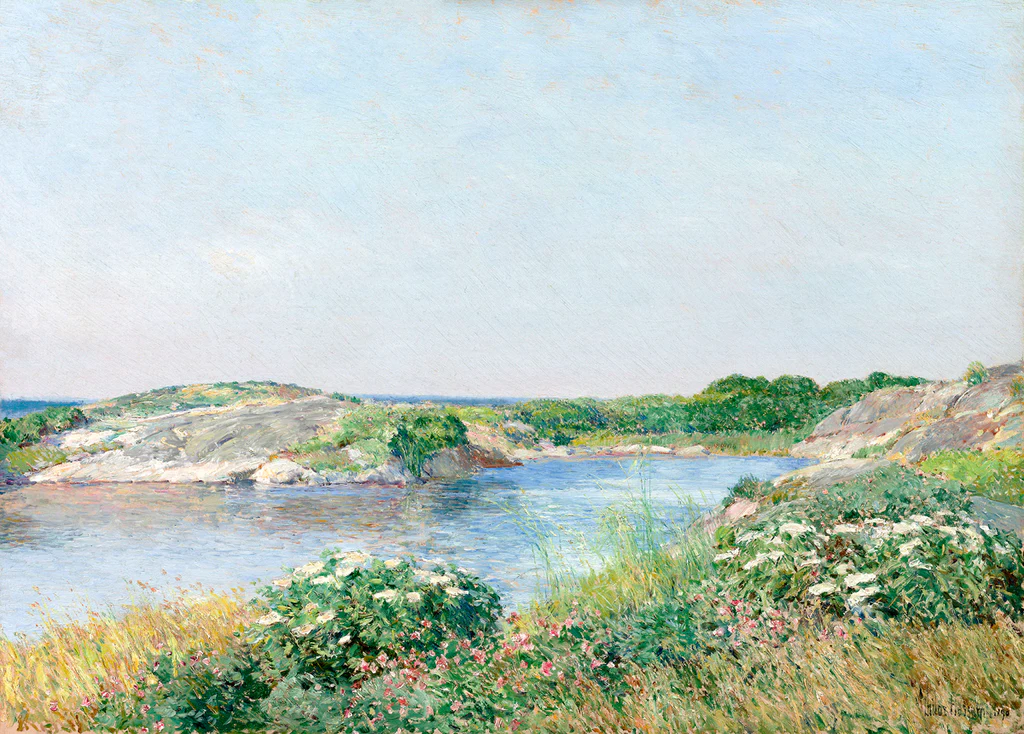
But I also love his painting philosophy along with his works.
I have long loved his quote: “I believe the man who will go down to posterity is the man who paints his own time and the scenes of everyday life around him” (Childe Hassam, 1892).
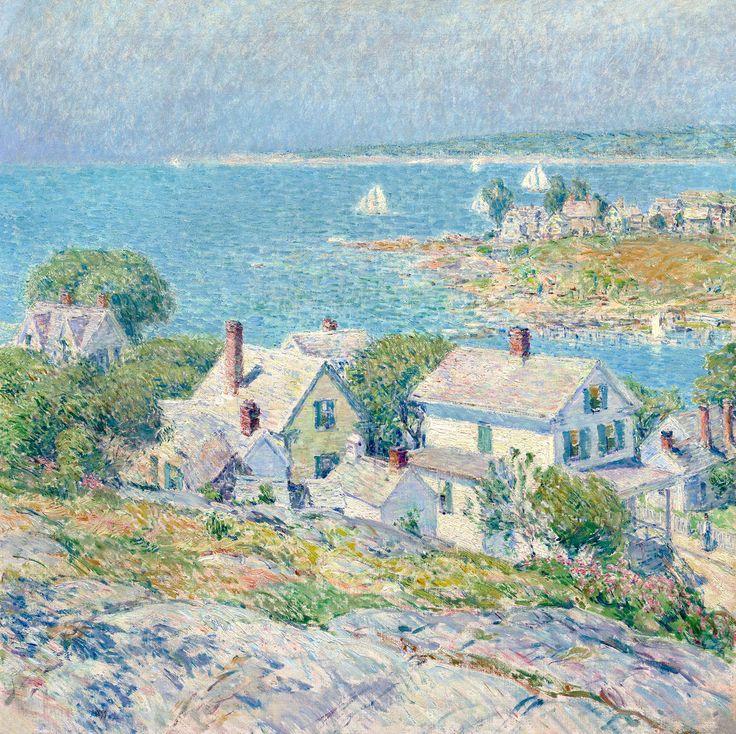
This quote matches up with so many of my beliefs about the value of our everyday lives. There is so much to notice and appreciate and draw attention to right in our own lives. It is the most rich, meaningful, authentic art for us to paint what we intimately know and to being new light on what seems common.

This is how so many of the famous artists proceeded, yet it is also so light and within reach of us!

I believe this is why he was slightly more realistic than some of the other Impressionists. He said, “True Impressionism is realism. So many people do not observe.” To create something “new” we just need to actually pay attention to what is around us. A critic praised his work saying, “The truth is poetry enough.” (Although other critics still said his art was “very pleasant, but not art.” Critics keep critiquing).
But his value in observation was so beautifully balanced with artistic interpretation. This has always been my goal. To balance the awe-striking reality around us with an interpretation showcasing its depth of beauty we cannot see without artistry. He calls this “the interpretation of the impression which nature makes upon the eye and brain.”

The final reason I love Hassam is that he created more than 2,000 oils, watercolors, pastels, and illustrations! He motivates me to make more art of what is around me, trusting that is it worthy both for the end of sharing my everyday life and for the process of having a life of creativity.

But the additional encouragement is that he didn’t go from 0 to 2,000 just like that! He started painting when he was around 20 and made some oil paintings but mostly painted watercolors as outdoor studies.

He didn’t come from a financially wealthy family and he had very little formal art training. He had a few kid art lessons when he was little and he worked the equivalent in his time of graphic design jobs. He even had trials and set back such as not being able to sale his work for more than $50 each at one point (worth $1,734.42 today). What he did for High Art schooling was take a trip to Europe and study the great masters of the past while painting watercolors of the countrysides he saw there.
He was very inspired by seeing the European art and it improved his paintings but he was not trying to only do the same paintings as them. He continued to hold fast to his belief that “An artist should paint his own time and treat nature as he feels it, not repeat the same stupidities of his predecessors.”
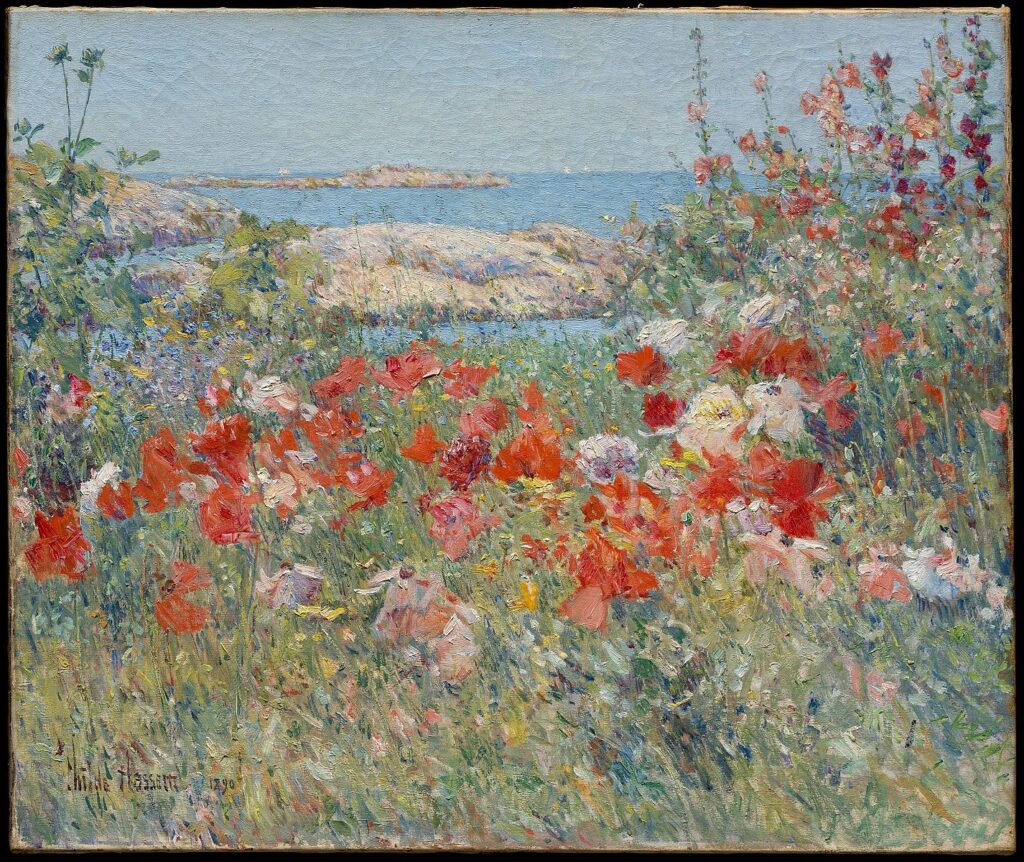
1890), Oil on canvas.
He gradually became acquainted with and friends with many artists and others in the art world and learned much from them, but he stayed true to what he believed about painting: paint what is familiar and close at hand, directly from nature, out doors when possible, and with light and movement emphasized.
With some of his oil paintings, painting the movement and light before it changes would have been impossible to do on the spot. So he created many sketches and notes and then brought them all back to the studio to paint the full image.
Despite painting from nature, many thought his color schemes were extremely strange. He said, “subjects suggest to me a color scheme and I just paint.”
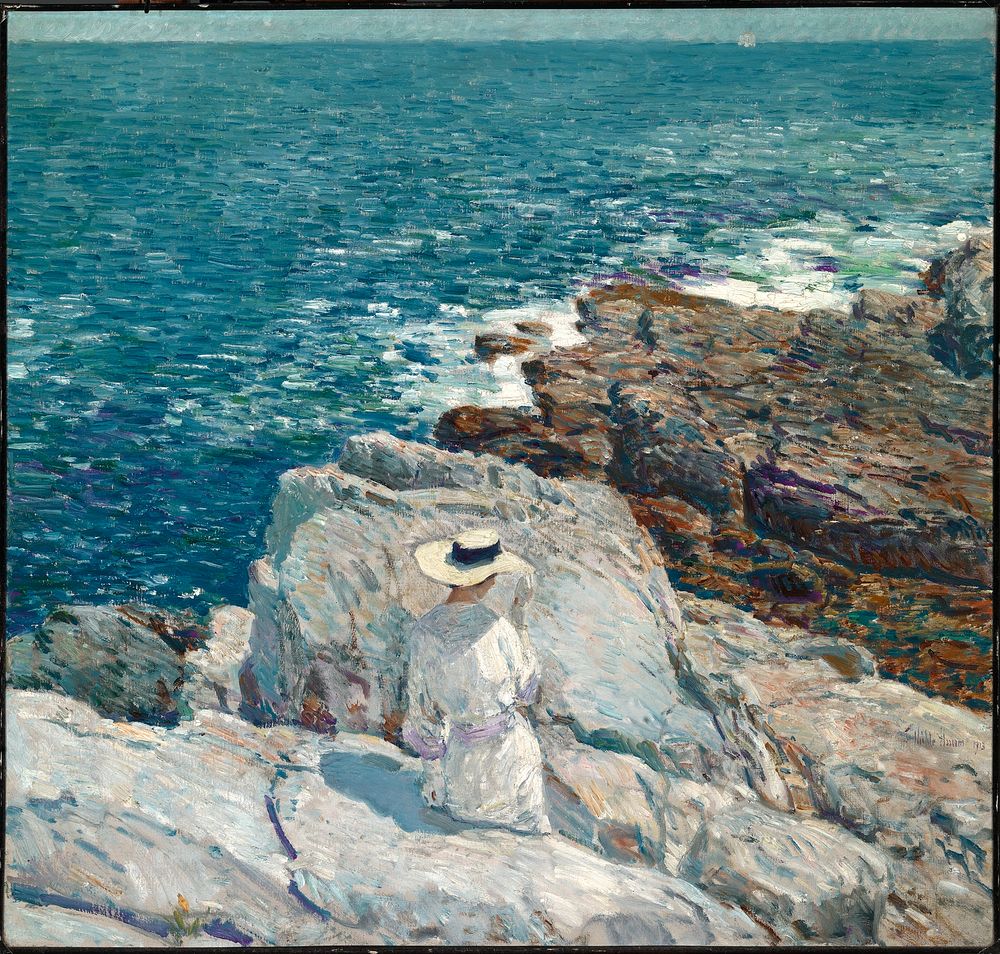
He made sure to place his work in places where there were people interested in it and so that even in the hardest times he didn’t need to add supplemental income like teaching art.
By the time he was 50, he was eagerly desired by the art world and selling his works for as much as $6,000 per painting. Which would be worth approximately $208,130.11 today. And he was doing about 40 works per season! J. Alden Weir said he “goes around with a crisp, cheerful air.” His paintings are now listed for sale at Christie’s for around $3,000,000.
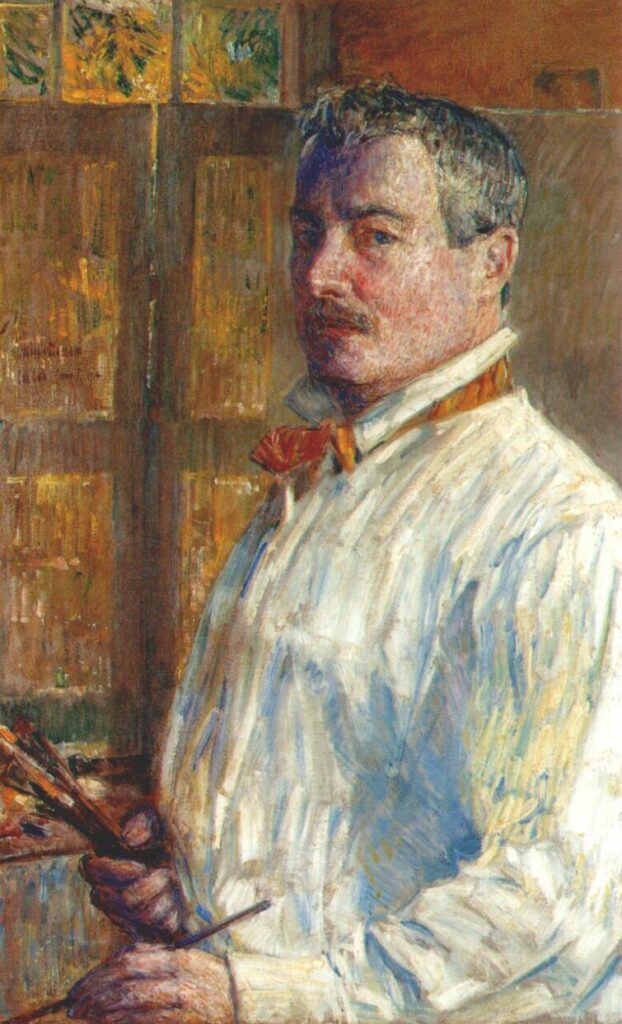
Some books I would like:
And here are the books my mom read to me:
Articles Referenced:
https://frederickhassam.org/biography.html
https://www.metmuseum.org/toah/hd/hass/hd_hass.htm
https://www.in2013dollars.com/us/inflation/1909?amount=50
https://www.christies.com/en/artists/childe-hassam?lotavailability=All&sortby=relevance
And Dan Scott’s article on how to paint rocks.
Thank you for reading! I hope this artist inspires you as he has me!
